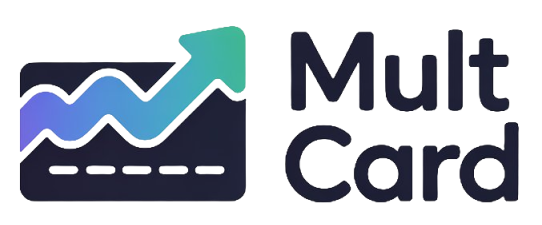In a world where almost every service is available at our fingertips, from ordering groceries to booking a vacation, it’s no surprise that finance has followed suit. The days of needing to dress up, gather stacks of paperwork, and wait in line at a bank to apply for a loan are quickly being replaced by a more streamlined, digital alternative.
This evolution has brought us online loans, a convenient and often faster way to access funds when you need them. But what exactly are they, and how does this digital process work from start to finish? Understanding the mechanics, benefits, and potential pitfalls is crucial before you click “apply.”
What Exactly is an Online Loan?
An online loan is simply a loan that you apply for, get approved for, and receive funds from, entirely through the internet. Unlike traditional loans from brick-and-mortar banks or credit unions, the entire process is handled digitally, often through a lender’s website or a mobile app. These lenders, who are often “fintech” (financial technology) companies, leverage technology to automate and speed up the lending process.
The core concept remains the same as any loan: you borrow a specific amount of money (the principal) and agree to pay it back over a set period, plus interest and any applicable fees. What sets online loans apart is the platform and the process. They remove the need for in-person meetings, reduce physical paperwork, and often use sophisticated algorithms to make lending decisions in minutes rather than days or weeks.
The Mechanics: How Online Loans Work Step-by-Step
While the interface may vary from one lender to another, the fundamental journey of obtaining an online loan follows a clear and consistent path. Here’s a breakdown of what you can expect.
1. The Application Process
The first step is to fill out an online application form. This is typically straightforward and much quicker than traditional paperwork. You will be asked to provide key information, including:
- Personal Information: Your full name, address, date of birth, and Social Security number (or equivalent identification).
- Financial Information: Your income sources, employment status, and sometimes your monthly expenses like rent or mortgage payments.
- Loan Details: The amount of money you wish to borrow and your preferred repayment term.
2. Verification and Underwriting
This is where the technology kicks in. Once you submit your application, the online lender’s automated systems begin the verification and underwriting process. They will perform a credit check (either a soft pull, which doesn’t affect your score, for pre-qualification, or a hard pull for the final application). They also use algorithms to assess your “creditworthiness” by analyzing the data you provided, your credit history, and your debt-to-income ratio to determine the risk of lending to you.
3. Approval and Offer
One of the biggest advantages of online loans is the speed of this step. In many cases, you can receive a decision within minutes. If you are approved, the lender will present you with a loan offer. This offer will detail:
- The approved loan amount.
- The Annual Percentage Rate (APR), which includes the interest rate plus any fees.
- The monthly payment amount.
- The total loan term (the number of months you have to repay).
It is absolutely critical to review this offer carefully before accepting.
4. Funding
If you agree to the terms and electronically sign the loan agreement, the lender will initiate the transfer of funds. Typically, the money is deposited directly into your designated bank account via an electronic transfer. Depending on the lender and your bank, you could receive the funds as quickly as the same business day, the next business day, or within a few days.
5. Repayment
Repayment is usually handled through automatic electronic payments (auto-debit) from your bank account on a set schedule (e.g., monthly or bi-weekly). Most online lenders provide a user portal or dashboard where you can track your loan balance, view your payment schedule, and make extra payments if you wish.
Types of Online Loans Available
The term “online loan” is a broad category that encompasses several different financial products, each designed for specific needs. Some of the most common types include:
- Personal Loans: These are all-purpose unsecured loans that can be used for almost anything, such as debt consolidation, home improvements, medical emergencies, or a large purchase.
- Payday Loans: Short-term, high-interest loans designed to be paid back on your next payday. They are very accessible but can be extremely expensive and should be approached with caution.
- Installment Loans: These loans are repaid in a series of fixed, regular payments (installments) over a set period. Most personal loans are a form of installment loan.
- Business Loans: Online lenders have become a popular source for small business funding, offering term loans, lines of credit, and invoice financing with a much faster application process than traditional banks.
- Peer-to-Peer (P2P) Loans: These loans are funded by individual investors rather than a financial institution. A P2P platform connects borrowers directly with people willing to lend their own money in exchange for a return on their investment.
Comparing Online Lenders vs. Traditional Banks
To better understand the key differences, here is a direct comparison between the two lending models:
| Feature | Online Lenders | Traditional Banks |
|---|---|---|
| Application Speed | Very fast; often completed in minutes with an instant or near-instant decision. | Slower; may require in-person appointments and can take days or weeks for a decision. |
| Convenience | Extremely high; can apply from anywhere, 24/7, on any device. | Lower; typically requires visiting a branch during business hours. |
| Approval Criteria | Often more flexible, considering factors beyond just credit score. May approve lower scores. | Generally stricter, with a heavy emphasis on credit history and stable income. |
| Interest Rates (APR) | Can be competitive for good credit, but may be higher for borrowers with poor credit. | Often offer lower interest rates, especially for existing customers with excellent credit. |
| Human Interaction | Minimal; support is typically through chat, email, or phone. | High; provides face-to-face interaction with a loan officer for personalized guidance. |
The Pros and Cons of Borrowing Online
Like any financial product, online loans come with their own set of advantages and potential drawbacks.
Advantages of Online Loans
- Speed and Efficiency: The entire process, from application to funding, is significantly faster than traditional methods.
- Unmatched Convenience: You can manage the entire loan process from the comfort of your home without disrupting your schedule.
- Greater Accessibility: Many online lenders have more lenient eligibility criteria, making it easier for individuals with less-than-perfect credit to get approved.
- Easy Comparison: Numerous online marketplaces allow you to compare offers from multiple lenders at once, helping you find the best rates.
Disadvantages and Risks to Consider
- Potentially Higher APRs: The convenience and accessibility can sometimes come at the cost of higher interest rates, particularly for subprime borrowers.
- Risk of Scams: The anonymity of the internet makes it a breeding ground for predatory lenders and scams. Diligence is required.
- Lack of Personal Support: If you value face-to-face guidance and building a relationship with your banker, the impersonal nature of online lending might be a negative.
- Hidden Fees: It’s crucial to read the loan agreement carefully for any mention of origination fees, prepayment penalties, or late payment fees.
Are Online Loans Safe? How to Spot a Scam
Legitimate online lenders are safe and regulated, but you must know how to distinguish them from fraudulent operators. According to the Federal Trade Commission (FTC), loan scams are a persistent threat. Watch out for these red flags:
- Guaranteed Approval: No legitimate lender can guarantee approval without first reviewing your financial information.
- Upfront Fees: A scammer may ask you to pay a “processing fee,” “insurance,” or “tax” before you receive the loan money. Legitimate lenders deduct fees from the loan amount; they don’t ask for money upfront.
- Pressure to Act Immediately: Scammers often create a false sense of urgency to prevent you from thinking through the offer.
- Unsecured Websites: A lender’s website URL should start with “https” (not “http”) and have a padlock icon in the address bar, indicating a secure connection.
- Vague or No Disclosure of Terms: A reputable lender will be transparent about the APR, fees, and repayment terms before you sign anything.
Conclusion: Is an Online Loan Right for You?
Online loans have fundamentally changed the borrowing landscape, offering a powerful combination of speed, convenience, and accessibility. They can be an excellent tool for managing unexpected expenses, consolidating debt, or financing a significant project. The key is to approach the process as an informed consumer. By understanding the mechanics, comparing your options, and carefully vetting your chosen lender, you can confidently leverage the benefits of digital lending.
Always prioritize your financial health by borrowing only what you can afford to repay and ensuring the loan terms align with your budget. For further guidance on what to look for in a loan product, it’s helpful to review the resources provided by consumer protection agencies. A deeper understanding of what an online loan is and how it works can empower you to make financial decisions that best serve your long-term goals.




